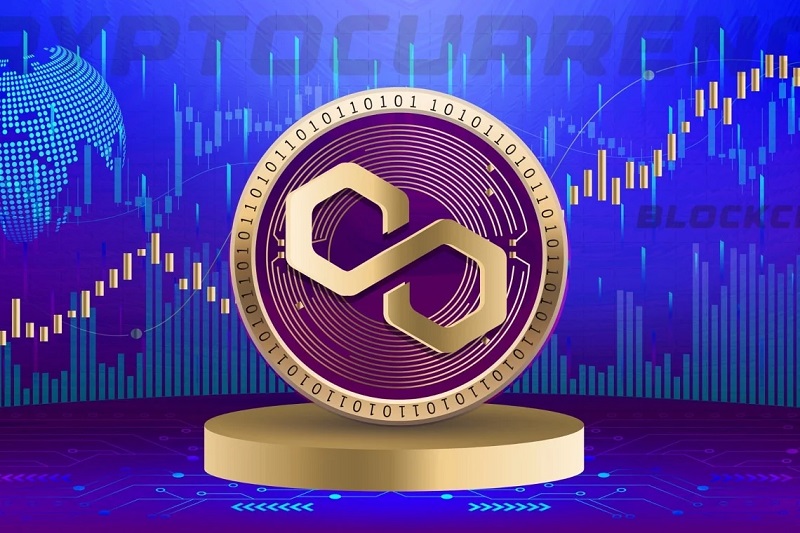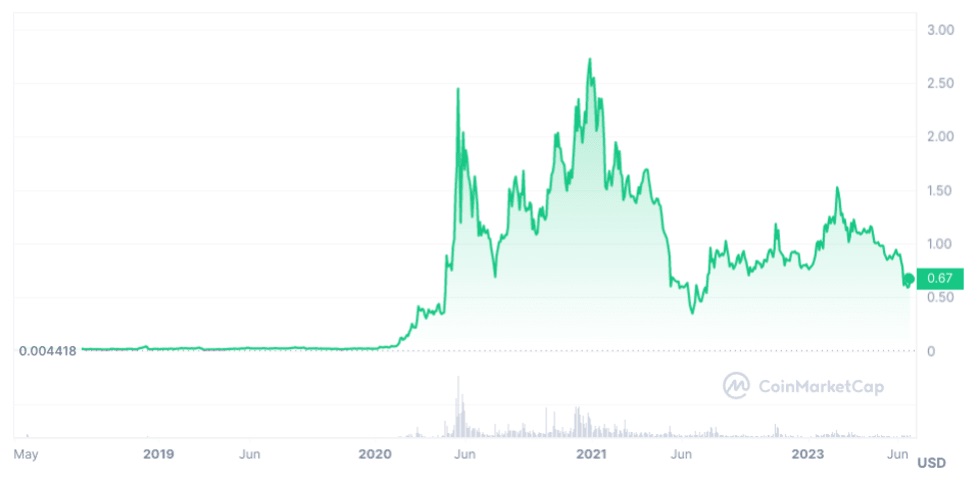
Polygon Cryptocurrency Review
Polygon, formerly known as Matic Network, is a layer-2 scaling solution built on the Ethereum blockchain. Founded in 2017, it aims to enhance Ethereum’s throughput and reduce transaction fees by utilizing sidechains. This makes it an efficient and low-cost alternative for developers looking to build decentralized applications (dApps) and users engaging in decentralized finance (DeFi) platforms.
What is Polygon, and When Did It Appear?
Polygon is a multi-chain scaling solution for Ethereum, offering faster and cheaper transactions through its innovative sidechain technology. The network was launched as Matic Network in 2017 by developers Jaynti Kanani, Sandeep Nailwal, and Anurag Arjun. In early 2021, it rebranded to Polygon to reflect its broader vision of creating a multi-chain ecosystem. The rebranding marked a significant evolution, aligning with Ethereum’s growing demand and challenges related to scalability.
Polygon leverages Ethereum’s security while ensuring better transaction speeds, which is critical for dApp developers. Since its inception, Polygon has become a key player in the Ethereum ecosystem, helping the network address congestion issues and the rising gas fees that have plagued Ethereum for years.
What Technology is Polygon Based On?
Polygon uses a Proof of Stake (PoS) consensus mechanism, providing a more sustainable and efficient alternative to Ethereum’s Proof of Work (PoW). The platform operates as a layer-2 scaling solution, which means it processes transactions off the Ethereum main chain and uses sidechains to improve throughput. These sidechains run parallel to Ethereum and communicate with the main chain, ensuring the security and decentralization aspects of Ethereum remain intact.
In addition to its PoS sidechain, Polygon introduced zk-Rollups and Optimistic Rollups. These are technologies designed to bundle multiple transactions into one, reducing the amount of data required on the main chain. This further improves the transaction speed and lowers costs for users. Polygon’s technology has positioned it as one of the most reliable Ethereum scaling solutions, and its developer-friendly infrastructure supports a wide range of dApps and services.
What Major Exchanges is Polygon Listed On?
Polygon is listed on several prominent cryptocurrency exchanges, making it accessible to both retail and institutional investors. Among the top exchanges where you can trade MATIC, Polygon’s native token, are Binance, Coinbase, Kraken, and Huobi Global.
On Binance, MATIC enjoys high liquidity and trading volume, offering users favorable trading conditions. Similarly, Coinbase, one of the most user-friendly exchanges globally, has listed MATIC, increasing its exposure to US-based investors. Kraken, another popular exchange, provides MATIC trading pairs, including fiat pairings, allowing users to directly purchase MATIC using traditional currencies like USD and EUR.
These listings on major exchanges have significantly contributed to the adoption and value appreciation of Polygon, making it a staple in the portfolios of cryptocurrency enthusiasts and investors alike.

How Stable is the Currency?
The stability of Polygon’s MATIC token is influenced by several factors, including the overall state of the crypto market, Ethereum’s performance, and its role as a layer-2 scaling solution. While MATIC has experienced volatility, as is typical with most cryptocurrencies, its underlying utility and growing adoption across DeFi and dApps offer a solid foundation for its value.
Polygon has also formed numerous partnerships with key players in the blockchain space, such as Aave, Chainlink, and Decentraland, further solidifying its position in the market. These collaborations help enhance the network’s stability by driving adoption and utility.
Moreover, with Ethereum transitioning to Ethereum 2.0, Polygon is expected to complement this upgrade, maintaining its relevance and potentially stabilizing the value of MATIC in the long run.
Despite market fluctuations, the utility of MATIC within the Polygon ecosystem, from governance to staking, contributes to a relatively stable price trajectory compared to many other altcoins. The network’s future scalability potential adds to its appeal for both developers and investors.
Is it Worth Investing in Polygon?
Polygon presents an attractive investment opportunity for those looking to gain exposure to Ethereum’s growing ecosystem without directly dealing with the high gas fees and slower transaction speeds. With its strong technical foundation, growing partnerships, and integral role in scaling Ethereum, MATIC has shown itself to be a resilient asset with long-term potential.
However, as with all investments in the cryptocurrency market, it is essential to consider the inherent risks. The volatility of MATIC’s price can result in substantial short-term price swings, which might not suit risk-averse investors.
In conclusion, Polygon stands out as a promising project in the cryptocurrency space, and its consistent growth, combined with its technical innovations, makes it worth considering for those interested in blockchain scalability and the Ethereum ecosystem.




